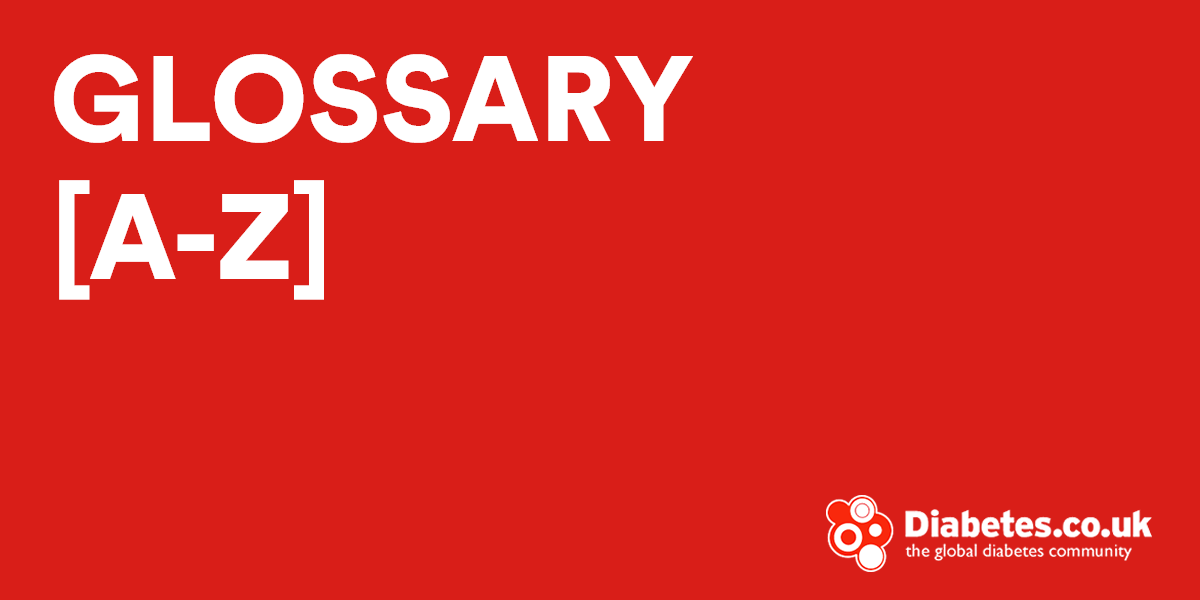saccharin (SAK-ah-rin):
a sweetener with no calories and no nutritional value.
secondary diabetes:
a type of diabetes caused by another disease or certain drugs or chemicals.
self-management:
in diabetes, the ongoing process of managing diabetes. Includes meal planning, planned physical activity, blood glucose monitoring , taking diabetes medicines, handling episodes of illness and of low and high blood glucose, managing diabetes when traveling, and more. The person with diabetes designs his or her own self-management treatment plan in consultation with a variety of health care professionals such as doctors, nurses, dietitians , pharmacists, and others.
70/30 insulin:
premixed insulin that is 70 percent intermediate-acting (NPH) insulin and 30 percent short-acting (regular) insulin
sharps container:
a container for disposal of used needles and syringes ; often made of hard plastic so that needles cannot poke through.
short-acting insulin:
a type of insulin that starts to lower blood glucose within 30 minutes after injection and has its strongest effect 2 to 5 hours after injection. See regular insulin
side effects:
the unintended action(s) of a drug.
sliding scale:
a set of instructions for adjusting insulin on the basis of blood glucose test results, meals, or activity levels.
SLP.D:
acronym for Doctorate in Speech-Language Pathology.
Somogyi (suh-MOH-jee) effect, also called rebound hyperglycemia:
when the blood glucose level swings high following hypoglycemia The Somogyi effect may follow an untreated hypoglycemic episode during the night and is caused by the release of stress hormones
sorbitol (SORE-bih-tall):
1. A sugar alcohol (sweetener) with 4 calories per gram 2. A substance produced by the body in people with diabetes that can cause damage to the eyes and nerves.
split mixed dose:
division of a prescribed daily dose of insulin into two or more injections given over the course of the day.
starch:
another name for carbohydrate , one of the three main nutrients in food.
Starlix:
see nateglinide
stroke:
condition caused by damage to blood vessels in the brain; may cause loss of ability to speak or to move parts of the body.
subcutaneous (sub-kyoo-TAY-nee-us) injection:
putting a fluid into the tissue under the skin with a needle and syringe
sucralose:
a sweetener made from sugar but with no calories and no nutritional value.
sucrose:
a two-part sugar made of glucose and fructose Known as table sugar or white sugar, it is found naturally in sugar cane and in beets.
sugar:
1. A class of carbohydrates with a sweet taste; includes glucose , fructose , and sucrose 2. A term used to refer to blood glucose
sugar alcohols:
sweeteners that produce a smaller rise in blood glucose than other carbohydrates Their calorie content is about 2 calories per gram Includes erythritol, hydrogenated starch hydrolysates, isomalt, lactitol, maltitol, mannitol, sorbitol , and xylitol Also known as polyols (PAH-lee-alls.)
sugar diabetes:
former term for diabetes mellitus
sulfonylurea (sul-fah-nil-yoo-REE-ah):
a class of oral medicine for type 2 diabetes that lowers blood glucose by helping the pancreas make more insulin and by helping the body better use the insulin it makes. (Generic names: acetohexamide, chlorpropamide, glimepiride, glipizide, glyburide, tolazamide, tolbutamide.)
syndrome x:
see insulin resistance and metabolic syndrome
syringe (suh-RINJ):
a device used to inject medications or other liquids into body tissues. The syringe for insulin has a hollow plastic tube with a plunger inside and a needle on the end.



